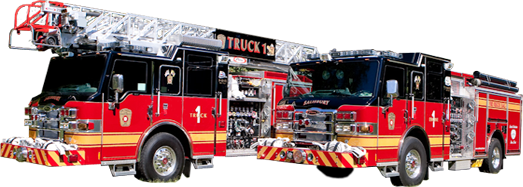Photo Gallery
Carbon Monoxide Safety Tips
Often called the invisible killer, carbon monoxide (CO) is an odorless, colorless, tasteless gas. Carbon monoxide is produced from incomplete combustion of fossil fuels. In the home CO can be formed, for example, by open flames, space heaters, water heaters, blocked chimneys or running a car inside a garage. The only way to accurately detect the presence of CO is to properly install and maintain carbon monoxide detectors.
CO detectors do not serve as smoke detectors and vice versa. However, dual smoke/CO detectors are also sold. Smoke detectors detect the smoke generated by flaming or smoldering fires, whereas CO detectors can alarm people about faulty fuel burning devices to prevent carbon monoxide poisoning. Since CO is colorless, tasteless and odorless (unlike smoke from a fire), detection and prevention of carbon monoxide poisoning in a home environment is impossible without such a warning device. CO detectors range in price from approximately $30.00-$70.00 and are available at local retailers.
Homeowners should remember not to install carbon monoxide detectors directly above or beside fuel-burning appliances, as appliances may emit a small amount of carbon monoxide upon start-up. A detector should not be placed within fifteen feet of heating or cooking appliances or in or near very humid areas such as bathrooms.
Early signs and symptoms of CO poisoning include headache, nausea, and dizziness. As CO builds up in the bloodstream, these get worse and may include confusion, lethargy, increases in respiratory and heart rate, chest pain, vision problems, and seizures. Leave the area and seek fresh air immediately if you feel you are experiencing such symptoms that could be caused by carbon monoxide exposure. Failing to do so could prove fatal.
CO ALARMS
- The International Association of Fire Chiefs recommend a carbon monoxide detector on every floor of your home, including the basement. A detector should be located within 10 feet of each bedroom door and there should be one near or over any attached garage. Each detector should be replaced every five to six years.
- Choose a CO alarm that has the label of a recognized testing laboratory.
· It is best to use interconnected alarms. When one sounds, all CO alarms in the home sound.
· Follow the instructions on the package to properly install the CO alarm.
· Test CO alarms at least once a month.
· Replace CO alarms according to the instructions on the package.
- Know the sounds the CO alarm makes. It will sound if CO is detected. It will make a different sound if the battery is low or if it is time to get a new CO alarm. If the audible trouble signal sounds, check for low batteries. If the battery is low, replace it. If it still sounds, call 911.
Preventing CO Poisoning
· When warming a vehicle, move it out of the garage. Do not run a fueled engine indoors, even if garage doors are open. Make sure the exhaust pipe of a running vehicle is not blocked. If you need to warm a vehicle, remove it from the garage immediately after starting it. Do not run a vehicle or other fueled engine or motor indoors, even if garage doors are open. Make sure the exhaust pipe of a running vehicle is not covered with snow.
· During and after a snowstorm, make sure vents for the dryer, furnace, stove and fireplace are clear of snow build-up.
· Clear all debris from dryer, furnace, stove, and fireplace vents.
· A generator should be used outdoors. Use in a well-ventilated location away from windows, doors, and vent openings.
· Gas or charcoal grills can produce CO. Only use them outside.
· Have heating equipment and chimneys inspected by a professional every year before cold weather sets in.
· Open the damper when using a fireplace for adequate ventilation.
· Never use your oven or stove to heat your home.
- If the CO alarm sounds, immediately move to a fresh air location outdoors or by an open window or door. Make sure everyone inside the home is accounted for. Call for help from a fresh air location and stay there until emergency personnel arrive.
· For more information, please visit: http://www.nfpa.org/safety-information/for-consumers/fire-and-safety-equipment/carbon-monoxide/carbon-monoxide-safety-tips







